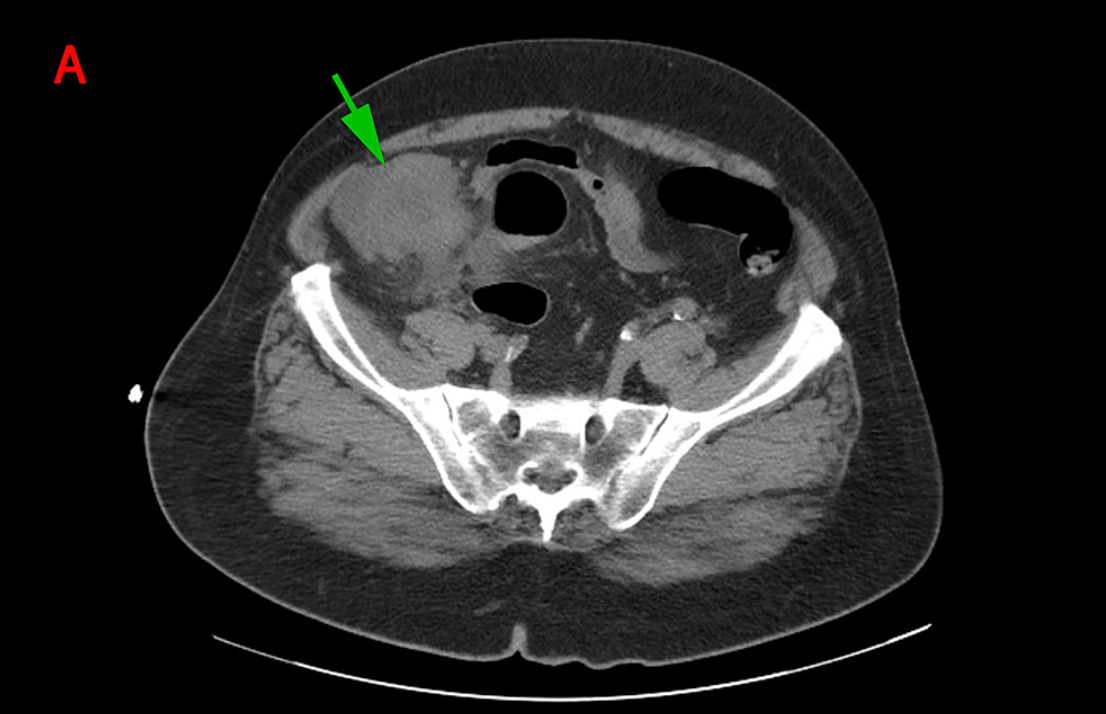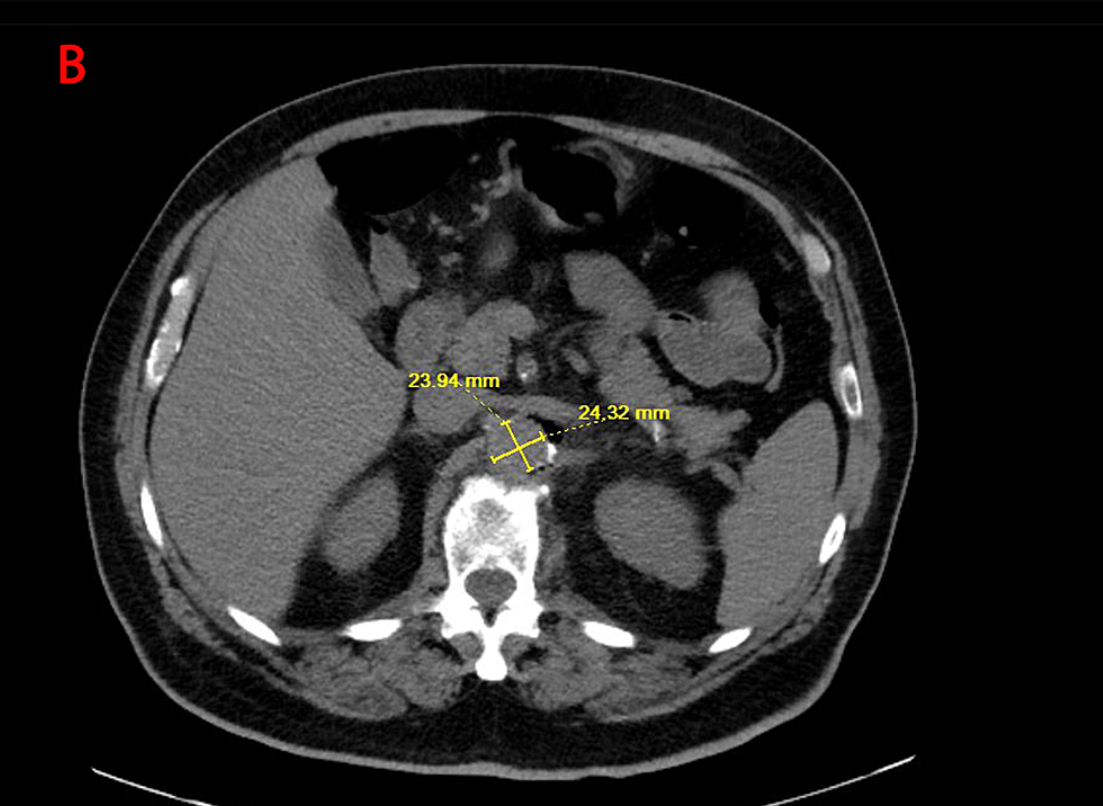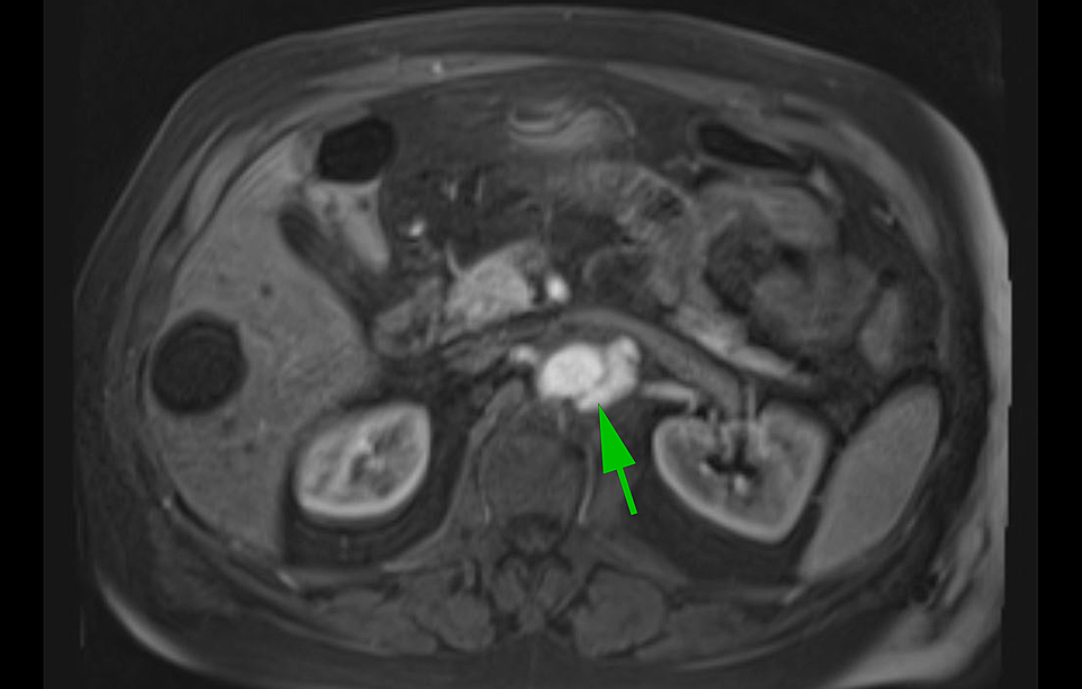Introduction
The current assignment examines a case study of a 67-year-old man with nontyphoidal Salmonella. The structure of the paper consists of the case outline, patient background, clinical indications, explanation of potential risks, diagnosis, pathology overview, and the justification of imaging. The paper incorporates academic research to support the findings and clarify the theoretical background for conclusions. Lastly, all details concerning the patient’s or organization’s personal information are omitted to preserve privacy.
Case Outline and Patient Symptoms
The patient, a 67-year-old man, contacted the healthcare facility after having mild fatigue, fever, diarrhea, and recently discovering blood in his stool. According to the patient, “little diarrhea and stomachache” was not a sufficient reason for an emergency; however, the identification of blood in his stool made him worry about the potential consequences of the medical complication. The symptoms were present for approximately 3-4 days, and the degree of discomfort and pain was gradually increasing during this period. The patient did not report nausea or vomiting, although he noted that he was feeling “weirder” than usual.
Patient Background
According to the patient’s medical history, complaints, and the early check-up, there were several associated complications that were threatening. Namely, the patient is an older adult (67 years old) with a weakened immune system. After the preliminary diagnosis of food poisoning/infection associated with bloody stool, a more thorough analysis and treatment were necessary since immunocompromised people are at immediate risk of additional complications (Ehuwa et al., 2021). Moreover, considering Salmonella serotypes specifically, children under five years old and older adults over 65 years old are significantly more likely to develop severe infections (Centers for Disease Control and Prevention, 2022a). Hence, an additional examination was critical to ensure that the patient’s condition was not life-threatening.
There was no indication of prior medical conditions associated with food poisoning, gastroenteritis, or other types of infection in the patient’s medical history. The patient reported that ‘occasional diarrhea and stomachache’ were relatively common symptoms in his life, but he never had noticeable blood in his stool. These symptoms could indicate the patient’s poor food hygiene or excessive contact with animals that are typical carriers of Salmonella germs (Centers for Disease Control and Prevention, 2022a). Considering the patient’s symptoms and prior medical history, he was referred for additional examination, a culture-independent diagnostic test (CIDT), and contrast-enhanced computer tomography (CECT).
Clinical Indications
The most notable clinical indications in the current case were the typical symptoms of nontyphoidal Salmonella, the patient’s condition (weakened immune system), and the patient’s general neglect of his health and food culture. This preliminary diagnosis required a CIDT to reveal bacteria in stool that led to the medical condition (Centers for Disease Control and Prevention, 2022b). In turn, the laboratory results will identify the serotype and provide a clearer understanding of the associated diagnosis and potential treatment.
Differential Diagnoses
In the current case, a CIDT is necessary because the associated symptoms could indicate a large variety of infections. Namely, Salmonella, Yersinia, Campylobacter, and Shigella bacteria have highly similar manifestations, including acute diarrhea, fatigue, bloody stool, and other gastrointestinal symptoms (Petri, 2021). In this case, stool testing is one of the most reliable methods to determine the genetic material and distinguish between Salmonella bacteria and other types (Petri, 2021). For the initial differential signs, it is useful to analyze the degree of diarrhea (extreme/mild), food culture (whether the patient is eating a lot of meat or dairy products), and associated patient conditions. For instance, Yersinia bacteria typically lead to gastroenteritis-related complications in young children and are less likely to affect older adults (Petri, 2021). Consequently, virus-related conditions are more likely to induce heavy vomiting and nausea, which were not reported by the patient (Petri, 2021). However, a CIDT is necessary to determine the exact differences between Salmonella, Campylobacter, and Shigella infections.
Diagnosis
The most likely diagnosis in the current case is nontyphoidal Salmonella (S. enterica) due to its high prevalence compared to other variants of Salmonella and other bacterial infections. Global statistics demonstrate that it is the most frequent type, which is approximately eight times more common than S. enterica Typhi (see Figure 1). Moreover, typhoidal sub-types, such as serotypes caused by Typhi, Paratyphi A, Paratyphi B, and Paratyphi C, are typically associated with more severe fevers (Centers for Disease Control and Prevention, 2022a). Lastly, while nontyphoidal Salmonella is less lethal than other types, the severity of the infection depends on multiple risk factors and might potentially lead to further medical complications.

Ultimately, the analysis of the stool collected by the patient revealed nontyphoidal Salmonella. The severity of the infection is high since the patient is an immunocompromised older adult. Moreover, these risk factors imply that the infection might lead to further medical complications (Centers for Disease Control and Prevention, 2022a). Hence, the patient is referred to additional imaging studies to mitigate the threats of associated conditions, such as aortitis and mycotic aneurysms.
Pathology Overview
Consequently, the current paper thoroughly analyzes the pathology and describes the potential outcomes. In general, Salmonella is a Gram-negative bacterium that is commonly understood as a foodborne infection (Ehuwa et al., 2021). Moreover, the terms Salmonella, salmonellosis, S. enteritidis, and S. enterica are frequently used interchangeably, although they indicate the bacteria, infection, and two serotypes, respectively (Ehuwa et al., 2021). Since the term Salmonella is the most commonly known concept, even credible sources utilize this name to describe the infection and not only the bacteria (Centers for Disease Control and Prevention, 2022a). As mentioned before, the most frequent symptoms include diarrhea, fever, vomiting, nausea, and bloody stool. The severity of these indications might differ depending on the patient’s condition and the associated serotype.
The concept of a serotype is critical to understanding the diagnosis, treatment, and potential consequences of the infection. CDC defines serotypes as “groups within a single species of microorganisms, such as bacteria or viruses, which share distinctive surface structures” (Centers for Disease Control and Prevention, 2022c). There are more than thirty well-documented Salmonella serotypes, which can be roughly classified as typhoidal and nontyphoidal (Centers for Disease Control and Prevention, 2022c). The former includes four primary classes, such as Typhi, Paratyphi A, Paratyphi B, and Paratyphi C, while the nontyphoidal group indicates all other serotypes. The causes are similar in both cases and typically concern contaminated food and water intake or excessive contact with animals (Centers for Disease Control and Prevention, 2022a). Ultimately, understanding the differences between the serotypes is critical to prescribing effective treatment since the bacteria have varying degrees of antibiotic resistance and lead to different complications.
The current case examines nontyphoidal S. enterica – the most common and least dangerous pathology in this class. However, the patient is an immunocompromised older adult who tends to ignore the symptoms and does not typically contact healthcare facilities in case of emergencies. Therefore, the condition has a high chance of progressing into more severe stages and might potentially invoke other medical conditions, such as aortitis and mycotic aneurysms (Abdelazeem et al., 2022; Patil et al., 2022). Multiple case studies demonstrate how the negligence of typical Salmonella symptoms can progress into life-threatening conditions, and it is critical to prevent this development.
Treatment
The treatment in most cases of Salmonella does not concern specific interventions, and a simple increase in fluid consumption generally resolves the problem. In the current case, the likely treatment is antibiotics, and the primary goal of the intervention is to prevent the further development of the infection (Petri, 2021). It is critical to note that antibiotics have a large variety of side effects and should be used only after the confirmation of the infection via laboratory tests or imaging studies. Nevertheless, the patient is at immediate risk of developing more severe complications due to multiple risk factors, and the medical treatment with oral antibiotics is appropriate (Petri, 2021). Some of the suggested medicines include fluoroquinolone and azithromycin, while the choice depends on the exact serotype (Petri, 2021). Moreover, if the antibiotics prove to be ineffective, it might imply that this Salmonella serotype is drug-resistant, and the focus on supportive therapy is necessary (Petri, 2021). In summary, the likely treatment in the current case involves antibiotics and significant fluid intake.
Risk of Infectious Aortitis and Specificities of Vulnerable Population Groups
Consequently, it is crucial to acknowledge the potential risks of Salmonella infection developing into more acute and dangerous medical conditions. Extensive research demonstrates that the pathology can lead to aortitis, mycotic aneurysms, and other related complications, particularly if the patient has multiple aggravating risk factors. For instance, the case study by Abdelazeem et al. (2022) analyzes the development of infectious aortitis from the initial Salmonella infection. The authors note that multiple infectious etiologies, including such bacteria as “Streptococcus pyogenes, Streptococcus pneumonia, Staphylococcus, and Salmonella” can result in this complication (Abdelazeem et al., 2022, para. 10). This analysis is particularly significant for the current case study because the patient has the same aggravating factors – older adult, male, and immunocompromised.
Although the mentioned development is relatively infrequent, it poses severe health risks to vulnerable population groups. Namely, the report by Patil et al. (2022) reveals how both typhoidal and nontyphoidal serotypes can lead to acute problems. The authors showcase it in the case study of an 89-year-old male who was diagnosed with “acute sepsis due to Salmonella bacteremia and multilobar bacterial pneumonia” (Patil et al., 2022, para. 5). The patient was referred to blood culture tests and multiple imaging studies, such as X-ray and CECT, to determine the exact causes of the complication. As a result, the authors conclude that “in a fraction of patients with risk factors, salmonellosis causes bacteremia and extraintestinal infections. Bacteremia is often associated with vascular infections” (Patil et al., 2022, para. 2). Focusing on the present case study, it is safe to assume that although nontyphoidal Salmonella is not life-threatening in itself, multiple risk factors imply that the patient should be referred to antibiotic treatment and consequent imaging studies.
Salmonella Impact
The overall impact of the pathology on the patient and his family is significant. The severity of the infection is relatively high since the patient reported bloody stool, fever, and diarrhea. It causes moderate-to-high inconvenience for the patient and his family, who must be alert at all times in case the patient’s health condition gets worse. Moreover, he requires consistent attention and assistance since fever is a significant problem in most daily tasks. However, as noted before, the major risk of the current condition is not the immediate health effects but the threat of the infection developing into other more acute complications. It causes substantial stress for the patient and his family due to uncertainty about the future and whether the patient might develop life-threatening conditions. In this case, it is the most appropriate solution to conduct more blood culture tests and imaging studies to recognize any potential threats in the early stage.
Imaging Justification
Lastly, the paper examines imaging findings and how they can help reveal complications emerged from Salmonella infections. For the current type, contrast-enhanced CT is one of the most effective methods to recognize the signs of associated conditions and is an appropriate complementary strategy to laboratory tests (Patil et al., 2022). However, the most significant advantage of imaging in the case of Salmonella infections is its ability to predict and recognize other associated complications that could potentially be life-threatening (Patil et al., 2022). As mentioned before, infectious aortitis might be caused by infectious etiologies, including Salmonella bacteria (Abdelazeem et al., 2022). The current sub-chapter examines some of the imaging studies from other well-documented cases to justify the usage of contrast-enhanced CT and X-ray when dealing with Salmonella infections.
Imaging Studies and Future Imaging
In similar cases where the patient is diagnosed with some type of Salmonella infection, it is critical to perform imaging studies during the initial assessment and at later phases of the pathology. For instance, the CT scan of the abdomen in Figures 2 and 3 demonstrates the initial stage of the infection in a 76-year-old male in the case study by Abdelazeem et al. (2022).


The green arrow in Figure 2 shows inflammatory changes that occurred due to the infection, while Figure 3 emphasizes the presence of midabdominal aortitis. After the imaging studies, the patient was treated with antibiotics and intravenous fluids. However, he experienced significant abdominal pain during one of the nights at the hospital stay and was referred for another CT scan. Figure 4 demonstrates the notable increase in the size of the aorta to 4x3cm via a CT scan, while Figure 5 displays the imaging via magnetic resonance imaging (MRI).


The green arrow in Figure 5 reveals the presence of a mycotic abdominal aneurysm that is also known as an infected aortic aneurysm. While the development of this condition was not caused exclusively by Salmonella infection, the authors acknowledged its connection to the mycotic abdominal aneurysm (Abdelazeem et al., 2022). In a similar study by Patil et al. (2022), the authors also established the link between the initial infection and its later development into an acute thoracic aortic dissection. In summary, when Salmonella infection affects vulnerable groups of people, it is critical to manage the risks by conducting tests and imaging studies.
These examples transparently show the significance of the initial assessment, evaluation of risk factors, early imaging, and consequent imaging studies to plan treatment and review progress. In both scenarios, the patient had the same aggravating risk factors as the individual in the current case – an immunocompromised older adult with additional health complications. Although Salmonella infection is not likely to develop into these medical conditions, it is crucial to monitor the patient’s health status and act accordingly. The professionals need to assess the risk factors and determine the most appropriate strategy based on the provided medical information. In most cases, it implies the necessity of blood culture tests and imaging studies to manage risks.
Conclusion
Salmonella remains one of the most common infections that occur due to poor food hygiene and excessive contact with animals. In general, Salmonellosis does not require medical intervention, and organisms of most people can self-regulate this complication. However, the situation changes dramatically in vulnerable groups of people, including older adults. In the current case study, the patient has a large number of aggravating risk factors, significantly increasing the possibility of the infection developing into more acute and dangerous conditions. Some of the well-documented research studies show how Salmonella can become one of the causes of aortitis and mycotic aneurysms. In summary, the current paper has examined the pathology, analyzed its impact on the patient’s life, and explained why it was necessary to conduct additional tests and imaging studies.
References
Abdelazeem, B., Kambalapalli, S., Lahmar, A., Yousaf, A., & Kusz, H. (2022). Infectious aortitis: Case report and literature review. Cureus, 14(3). Web.
Centers for Disease Control and Prevention. (2022a). Information for healthcare professionals and laboratories. Web.
Centers for Disease Control and Prevention. (2022b). Diagnosis and public health testing. Web.
Centers for Disease Control and Prevention. (2022c). Serotypes and the importance of serotyping Salmonella. Web.
Ehuwa, O., Jaiswal, A. K., & Jaiswal, S. (2021). Salmonella, food safety and food handling practices. Foods, 10(5), 907. Web.
Patil, S., Wieser, M., Chen, C., Nelson, T. B., Holliday, Z., & Roland, W. (2022). Acute salmonella typhimurium aneurysmal aortitis with bacteremia, pneumonia, and thoracic aortic dissection in an elderly male. Cureus, 14(1). Web.
Petri, W. A. (2021). Salmonella infection. Epocrates. Web.